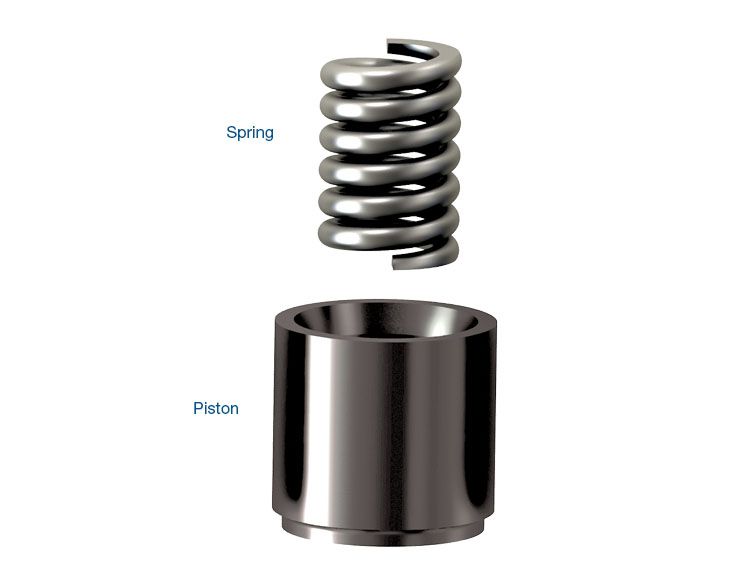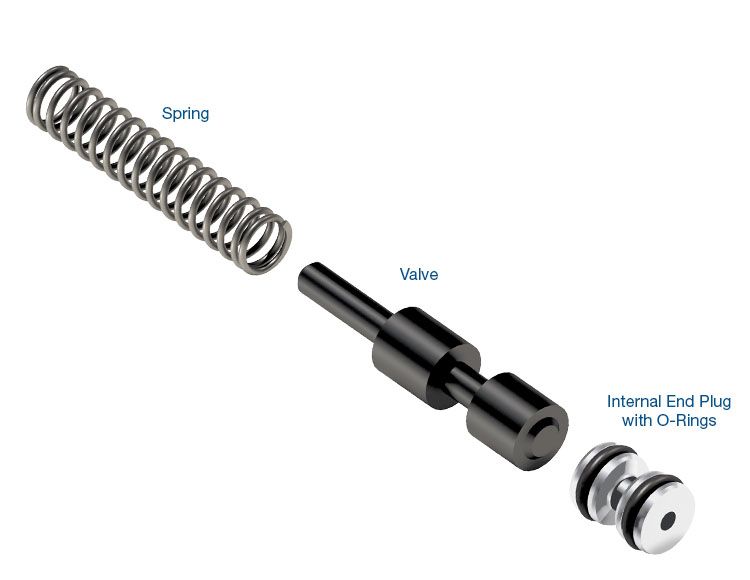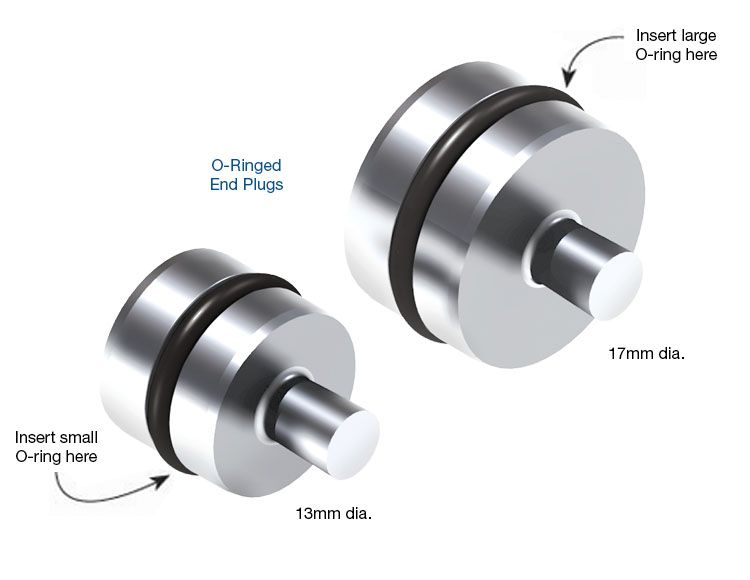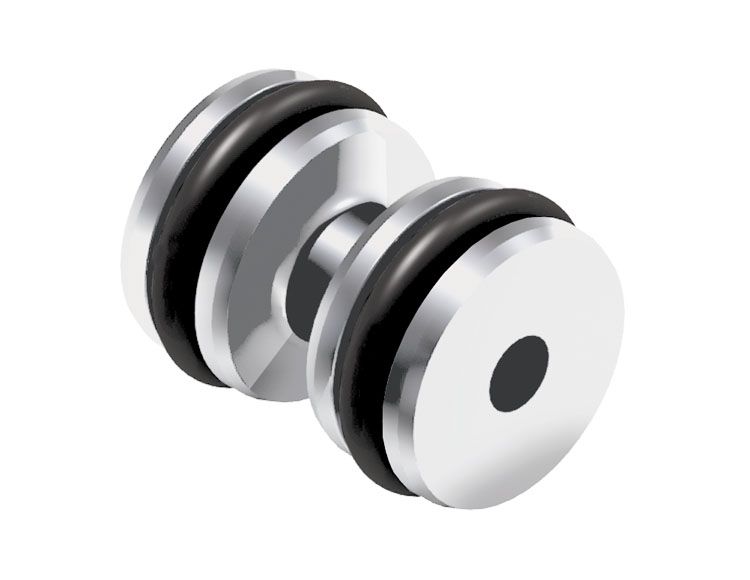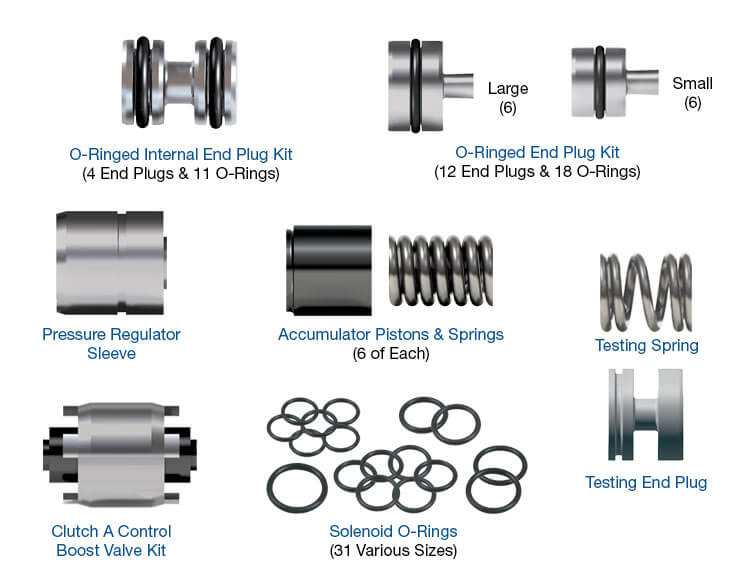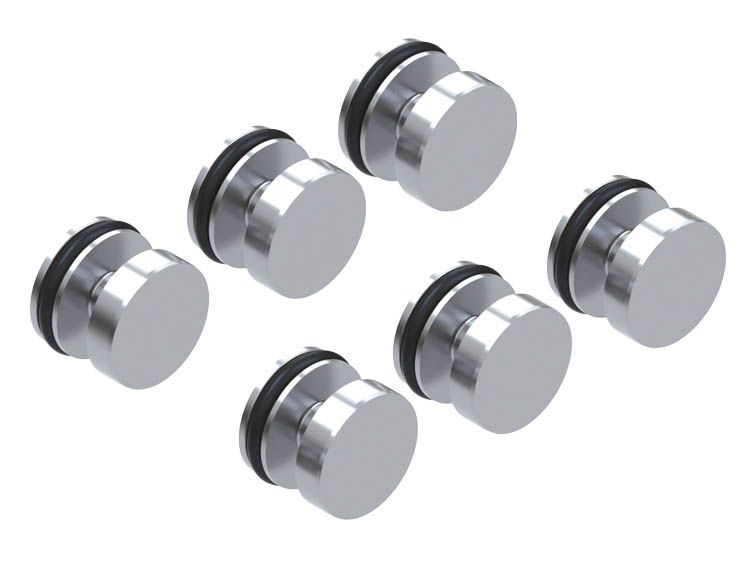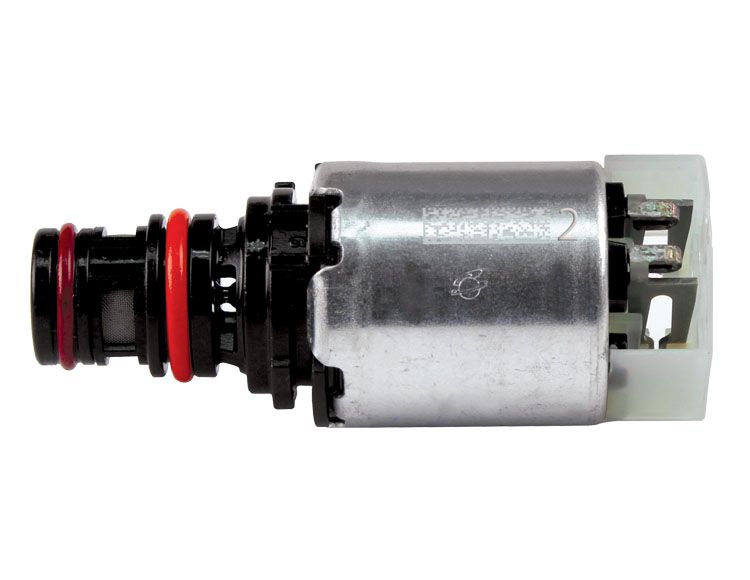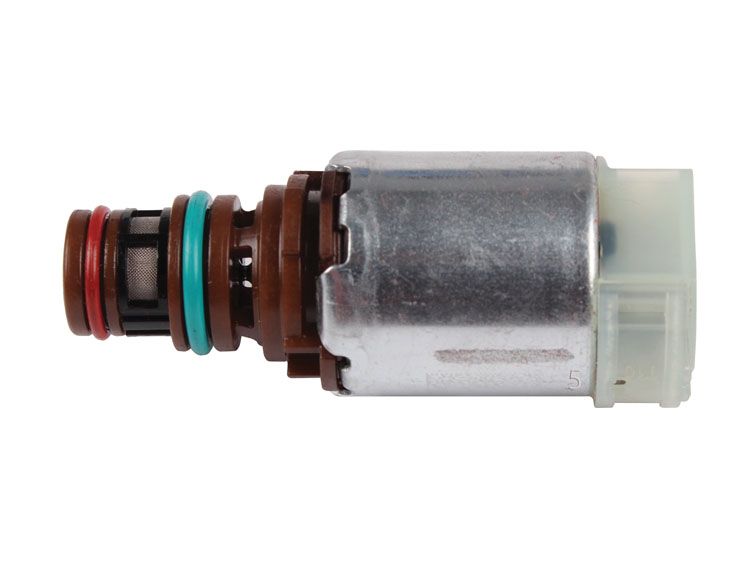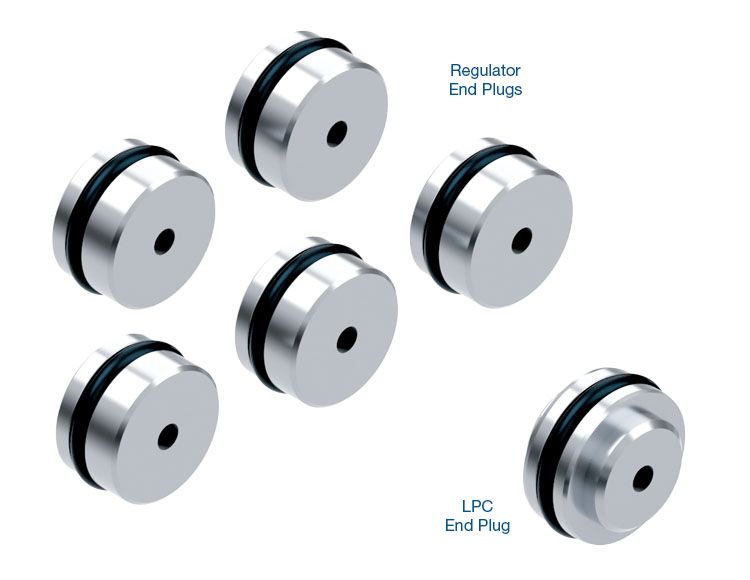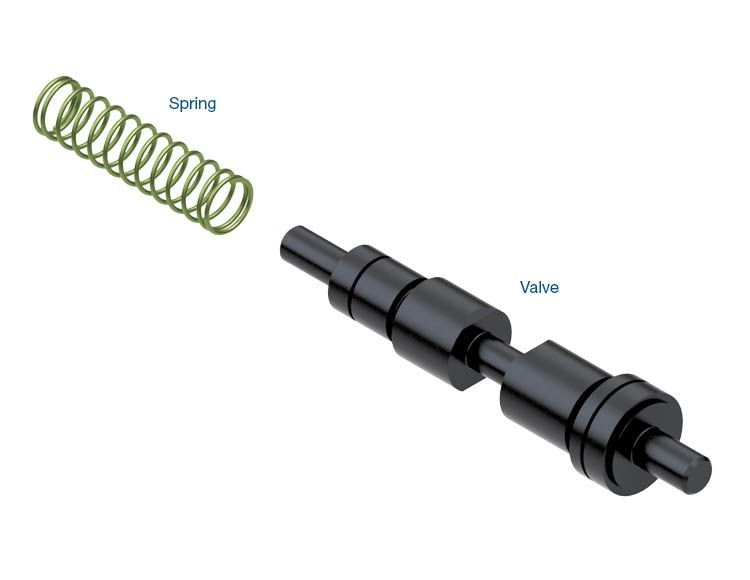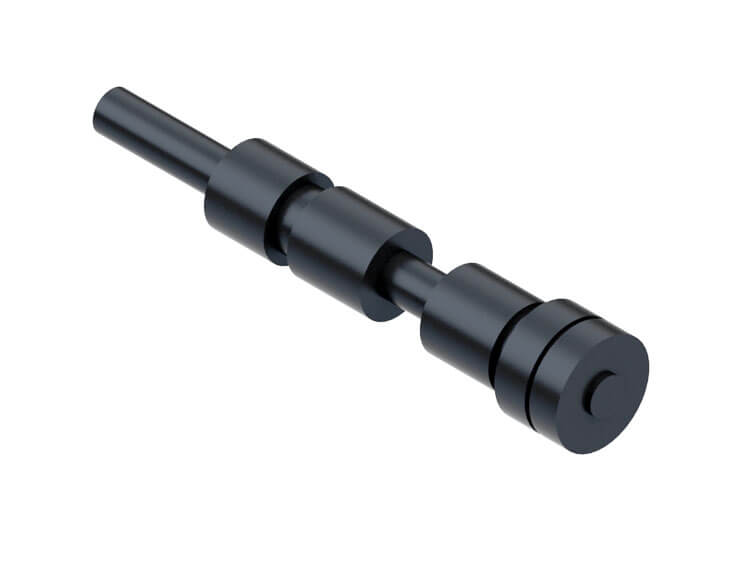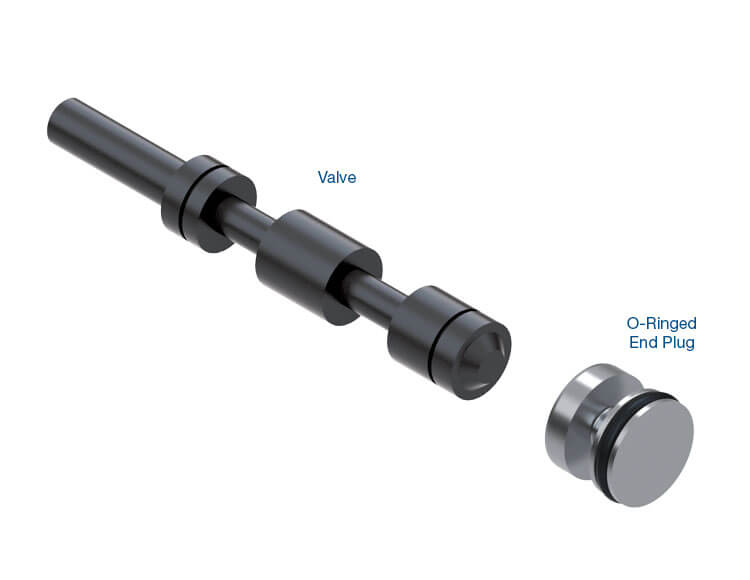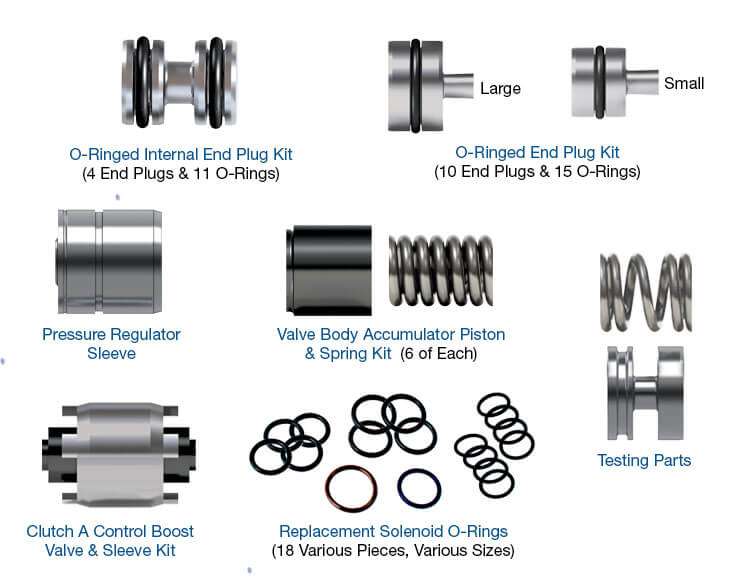Troubleshooting Ford 6R80 & 6R140 2-3 Shift Quality Issues
Jim Dial
We all are too familiar by now with the numerous band numbers on Ford 6R80 and 6R140 transmissions. We know that — unless you are programming in a new calibration code — it is best to replace a solenoid with the exact same band number as what was taken out of that position on the valve body. Knowing which solenoid could be at fault can get tricky at times, and pinpointing an exact solenoid based on a specific complaint may cause you to pull the valve body a few times, which is no fun. ATF running down your arms and into your armpits can get irritating.
The complaint we have is related to the 2-3 shift. The shift sometimes flares and sometimes has a quick bind-up. Immediately after installing the transmission, we reset the adapts and did the 20–25 stop-and-start road test going from 1st all the way up to 6th Gear, then came down to a stop 20 times, which usually fixes an adaptation problem. Our situation now is that we still have the same complaint; it is like it can’t make up its mind. So, the first thing to do is to look at an apply chart, where we see that the 1-2-3-4 clutch is on in 1st Gear and the 2-6 clutch comes on in 2nd Gear. Then for the 2-3 shift, the 3-5-R clutch comes on as the 2-6 is released. Reviewing this data, we see that during a 2-3 shift, the 3-5-R is applied, but the 2-6 must release at the same time. Now that we know this, we understand that both the 3-5-R and 2-6 solenoids are in question.
After driving this vehicle a little longer — and paying attention to the 2-6 apply — we notice that the 1-2 shift is sometimes a little slow, then at times it has a bump at the end of it. During our road test, we record the upshift transitions on the scan tool and they look normal. Figure 1 shows the beginning of the 2-3 upshift (the figures show below are from a 6R80 application, but 6R140 is similar). Notice that the “C” solenoid (NL) for the 2-6 clutch amperage is 1.0 Amp and solenoid psi (not kPa) is low. The “B” solenoid (NH) amperage for the 3-5-R clutch drops to .564 mA, and the “B” solenoid pressure builds to 14.6 psi. Figure 2 shows the “C” solenoid amperage dropping off and the pressure dropping to 0. Figure 3 shows the completed 2-3 shift solenoid “B” amperage is .073 and solenoid “B” pressure is near 50 psi. The “C” solenoid amperage and pressure stay low while in 3rd Gear.
After reviewing this data, the electronics prove to be working correctly, as we see the “C” solenoid is fully off just before the “B” solenoid is fully off, and this pattern proves to be consistent. So in this situation, we choose to change both the “C” 2-6 solenoid and the “B” 3-5-R solenoids so that we only have to pull the valve body off once, as this seems to be more of a solenoid mechanical problem. See Figure 4 for solenoid locations for both 6R80 and 6R140.
| Figure 1 – 6R80 2-3 Upshift |
|---|
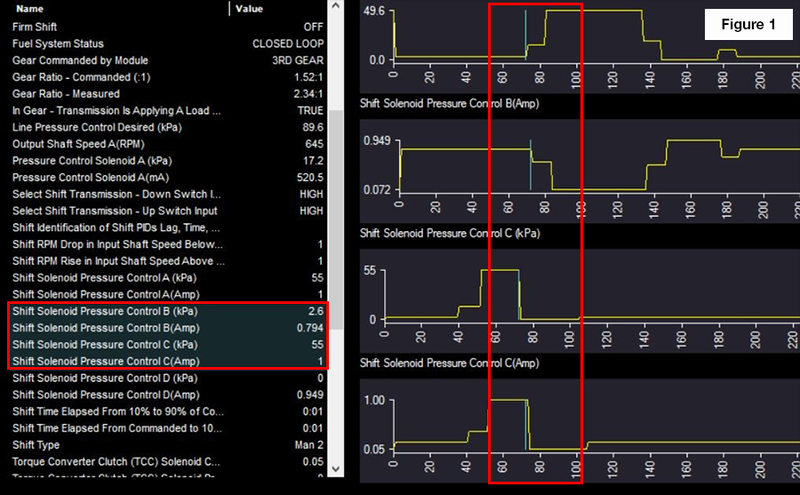 |
| Figure 2 – 6R80 2-3 Transition |
|---|
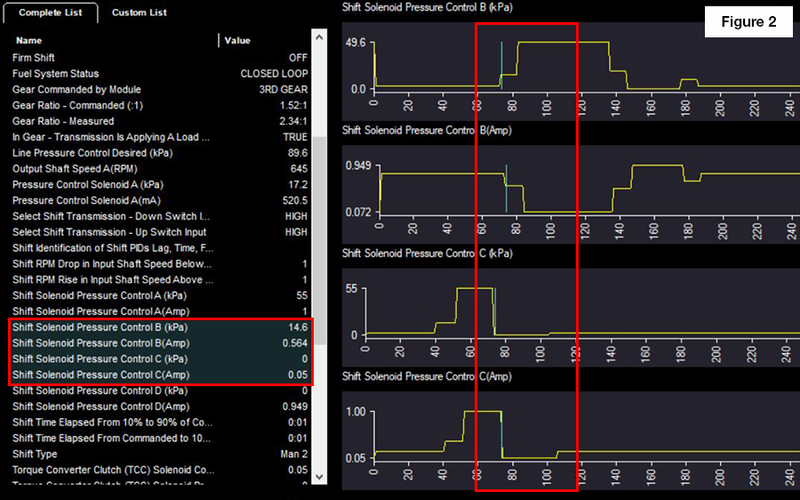 |
| Figure 3 – 6R80 Completed 2-3 Shift |
|---|
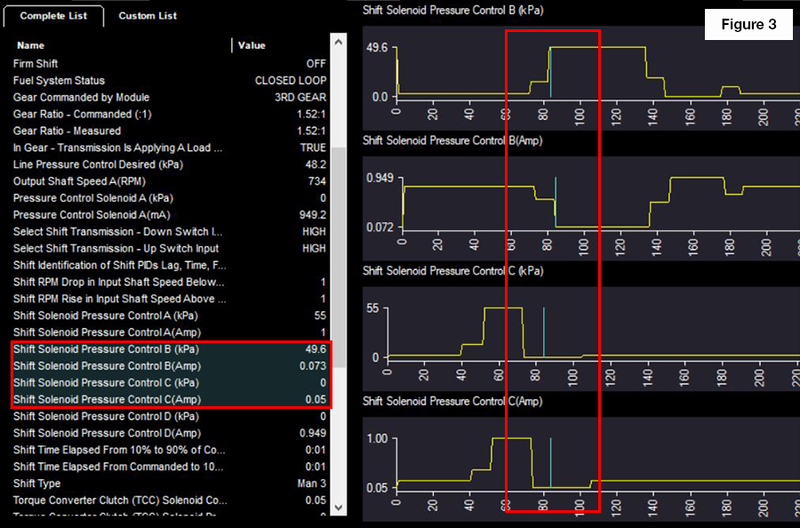 |
| Figure 4 – 6R80, 6R140 Solenoid Locations | |
|---|---|
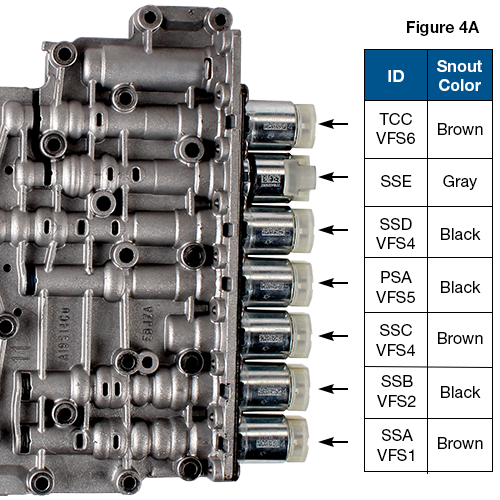 | 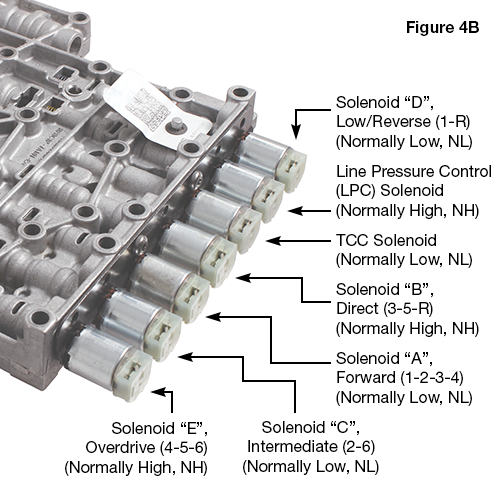 |
Other considerations need to be looked at in the way of clutch clearances. Be careful not to tighten clutch packs up too much as this can also cause a binding condition. Stick close to the OE specifications as this can cause you to have to remove the transmission right after installing it into a vehicle.
After replacing both the “C” 2-6 and “B” 3-5-R solenoids, resetting adapts and going through the 20 stop-and-start road test, the problem was resolved. It is important to look at an apply chart and really get a good feel on a road test to make sure that diagnosis is not going to cost more time. Sometimes it may be more than one solenoid causing shift complaints or even a clearance issue inside of the transmission.
Jim Dial is a Sonnax technical specialist. He is a member of the Sonnax TASC Force (Technical Automotive Specialties Committee), a group of industry technical specialists, transmission rebuilders and Sonnax technicians.
Related Units
Related Parts
Required
Recommended
6R60, 6R75, 6R80 (2009–2014), ZF6HP19, ZF6HP26, ZF6HP32
Oversized Pressure Regulator Valve Kit 95740-01K
Fits 6R80 '09-'14. Cannot be used in units that have a 053 separator plate.
OE valve name: SYS.DR-V
-
Helps cure:
- Poor shift quality
- Flare shifts
- Harsh shifts
- Erratic line pressure
- Slips in Forward & Reverse
- Delayed Reverse
- No Reverse
- TCC slip
Required
Recommended
6F35 (Gen. 1), 6F35 (Gen. 2), 6F35 (Gen. 3), 6R100, 6R140, 6R60, 6R75, 6R80 (2009–2014), 6R80 (2015-Later), 845RE, 850RE, CFT30, ZF6HP19, ZF6HP21, ZF6HP26, ZF6HP28, ZF6HP32, ZF6HP34, ZF8HP45, ZF8HP50, ZF8HP55, ZF8HP70, ZF8HP75
Accumulator Piston Kit 95740-15K
Required
Recommended
6R100, 6R60, 6R75, 6R80 (2009–2014), 6R80 (2015-Later), ZF6HP19, ZF6HP26, ZF6HP32
Oversized Solenoid Pressure Regulator Valve Kit 95740-17K
ZF valve name: DR.REO-V
-
Helps cure:
- Flare shifts
- Neutral shifts
- Harsh upshifts
- Harsh downshifts
- Gear ratio codes
- Solenoid performance codes
- Delayed Forward
- Delayed Reverse
- Wrong gear starts
- TCC slip
Required
Recommended
6R100, 6R60, 6R75, 6R80 (2009–2014), 6R80 (2015-Later), ZF6HP19, ZF6HP26, ZF6HP32
O-Ringed End Plug Kit 95740-19K
Required
Recommended
6R100, 6R60, 6R75, 6R80 (2009–2014), 6R80 (2015-Later), ZF6HP19, ZF6HP26, ZF6HP32
O-Ringed Internal End Plug Kit 95740-25K
Required
Recommended
6R140
Solenoid (NH) 126422-NHK
Can only be used to replace normally high (NH) solenoids with identification band number 2.
-
Helps cure:
- Shift concerns
- Line pressure instability
Required
Recommended
6R140
Solenoid (NL) 126425-NLV
Can only be used to replace normally low (NL) solenoids with identification band number 5.
-
Helps cure:
- Shift concerns
- TCC apply & release concerns
Required
Recommended
6R140
Oversized Direct Clutch Regulator Valve Kit 126740-11K
-
Helps cure:
- Delayed Reverse
- 2-3 Flare
- 4-5 Flare
- Ratio codes
- 3rd Slip
- 5th Slip
- Direct clutch burned
- Bind-up
- Reverse slip
Required
Recommended
6R100, 6R60, 6R75, 6R80 (2009–2014), 6R80 (2015-Later), ZF6HP19, ZF6HP21, ZF6HP26, ZF6HP28, ZF6HP32, ZF6HP34
Solenoid Test Manifold Kit 95430-VTK
Required
Recommended
6R100, 6R60, 6R75, 6R80 (2009–2014), 6R80 (2015-Later), ZF6HP19, ZF6HP26, ZF6HP32
Oversized Clutch C Regulator Valve 95740-40K
Cannot be used in units that have a 053 separator plate.
-
Helps cure:
- 6th Slip
- 2nd Slip
- Clutch failure
- Poor shift quality
- Ratio errors
Required
Recommended
6R140
Oversized Solenoid Feed Pressure Regulator Valve Kit 126740-24K
-
Helps cure:
- Delayed Reverse
- Flare shifts
- Harsh shifts
- Delayed Forward
While Sonnax makes every effort to ensure the accuracy of technical articles at time of publication, we assume no liability for inaccuracies or for information which may become outdated or obsolete over time.

